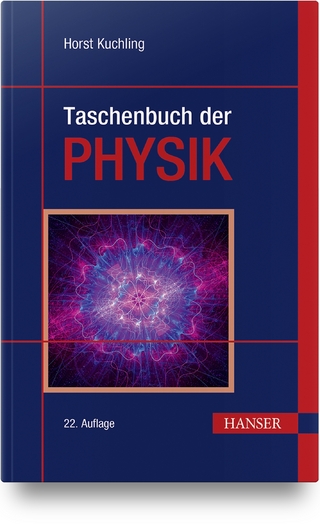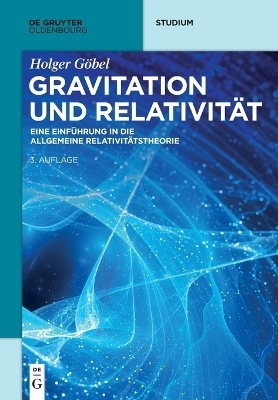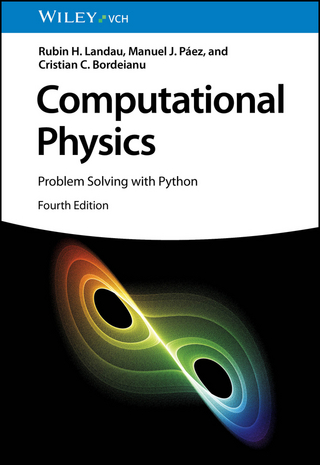
Advanced Molecular Quantum Mechanics
Chapman and Hall (Verlag)
978-0-412-10490-9 (ISBN)
- Titel ist leider vergriffen;
keine Neuauflage - Artikel merken
Of course, the relevant equations may be extracted from the literature, but, if the underlying physics is not understood, this is a practice that is at best dissatisfy- ing and at worst dangerous. One instance where great care must be taken is in the use of spectroscopically determined parameters to test the accuracy of elec- tronic wave functions.
1 Non-relativistic Quantum Mechanics.- 1.1 Formal quantum mechanics.- 1.2 The Schrodinger equation.- 1.3 Heisenberg's uncertainty principle and related topics.- 1.4 Angular momentum.- 1.5 Electron spin.- 1.6 The need for a relativistic theory.- 2 Vector and Matrix Algebra.- 2.1 Vectors and vector multiplication.- 2.2 The repeated subscript convention for summation.- 2.3 The Kronecker delta ?ij.- 2.4 The ?ijk notation.- 2.5 The ?ijk sum rules.- 2.6 Examples I.- 2.7 The vector operator ?.- 2.8 The gradient.- 2.9 The divergence.- 2.10 The curl.- 2.11 Examples II.- 2.12 Second derivatives in vector calculus.- 2.13 The Dirac delta function.- 2.14 Matrices and determinants: a summary.- 2.15 Vectors in four dimensions.- 3 Classical Mechanics.- 3.1 Inertial frames and Galileo's relativity principle.- 3.2 The principle of least action.- 3.3 Lagrange's equations of motion.- 3.4 The Lagrangian for a system of particles.- 3.5 Constants of motion.- 3.6 The Hamiltonian.- 4 Special Relativity.- 4.1 Einstein's principle of relativity.- 4.2 The interval.- 4.3 The Lorentz transformation.- 4.4 Contraction, dilation and paradoxes.- 4.5 The transformation of velocities.- 4.6 The relativistic mechanics of a free particle.- 4.7 Four-vectors.- 5 The Interaction of Charged Particles with Electromagnetic Fields.- 5.1 Units.- 5.2 The electromagnetic potentials.- 5.3 The field vectors.- 5.4 The Lorentz transformation of electric and magnetic fields.- 5.5 Gauge transformations.- 5.6 Maxwell's equations.- 5.7 The potentials and fields due to a stationary charge.- 5.8 The potentials due to a moving charge.- 5.9 The interaction of two charged particles.- 5.10 The Thomas precession.- 6 The Classical Theory of Electromagnetic Fields.- 6.1 Continuous mechanical systems.- 6.2 The Lagrangian density for an electromagnetic field.- 6.3 The current four-vector.- 6.4 The second pair of Maxwell's equations.- 6.5 Electromagnetic waves.- 6.6 Solution of the wave equation for free space.- 6.7 The characteristic vibrations of an electromagnetic field.- 7 Relativistic Wave Equations.- 7.1 Quantization of classical equations.- 7.2 Gauge invariance of quantum mechanical equations.- 7.3 The Klein-Gordon equation.- 8 The Dirac Equation.- 8.1 The Dirac equation for a free electron.- 8.2 The Dirac operators ? and ?.- 8.3 The introduction of an electromagnetic field.- 8.4 Electron spin.- 8.5 Lorentz invariance of the Dirac equation.- 8.6 The negative energy solutions - positrons.- 8.7 The non-relativistic approximation of the Dirac equation.- 8.8 The method of small components.- 8.9 The Foldy-Wouthuysen transformation.- 8.10 The free electron.- 9 The Wave Equation for Many Electrons.- 9.1 The electromagnetic potentials due to a moving electron.- 9.2 The Hamiltonian for two electrons.- 9.3 The Breit equation.- 9.4 Reduction of the Breit equation to non-relativistic form.- 9.5 Radiative corrections.- 9.6 The many-electron Hamiltonian.- 10 The Molecular Hamiltonian.- 10.1 The introduction of nuclei.- 10.2 Finite nuclear size effects.- 10.3 Spectroscopically useful Hamiltonians.- 10.4 Effective Hamiltonians.- 11 The Hydrogen Atom.- 11.1 Non-relativistic theory for a one-electron atom.- 11.2 The non-relativistic approximation of the Dirac equation.- 11.3 The simultaneous eigenfunctions of j2, jz, l2, s2 and K.- 11.4 Commutation relations for the Dirac Hamiltonian.- 11.5 The Dirac equation in polar coordinates.- 11.6 Solution of the radial equations.- 11.7 The energy levels.- 11.8 Comparison of Dirac and non-relativistic atomic orbitals.- 11.9 The Lamb shift.- 11.10 More complicated systems.- 12 Quantum Field Theory.- 12.1 Quantization of the electromagnetic field.- 12.2 Solution of the one-dimensional harmonic oscillator equation.- 12.3 Creation and annihilation operators.- 12.4 Photons.- 12.5 Zero-point energy and vacuum fluctuations.- 12.6 Fermions and second quantization.- 13 The Interaction of Radiation and Matter.- 13.1 The interaction Hamiltonian.- 13.2 Time-dependent perturbation theory.- 13.3 Matrix elements of the interaction Hamiltonian.- 13.4 Absorption and emission.- 13.5 Comparison of the semiclassical and quantized theories.- 13.6 Multi-photon processes.- 13.7 The scattering of photons by molecules.- 13.8 Line widths and resonance fluorescence.- Appendix A Units.- A.1 SI units.- A.2 Conversion from the mixed (Gaussian) CGS system to the SI system.- A.3 Recommended values of physical constants.- Appendix B Vector Relations in Three Dimensions.- Appendix C General Bibliography.- Author Index.
| Erscheint lt. Verlag | 24.5.1973 |
|---|---|
| Reihe/Serie | Studies in Chemical Physics |
| Zusatzinfo | biography |
| Verlagsort | London |
| Sprache | englisch |
| Maße | 160 x 250 mm |
| Gewicht | 660 g |
| Themenwelt | Naturwissenschaften ► Physik / Astronomie |
| ISBN-10 | 0-412-10490-3 / 0412104903 |
| ISBN-13 | 978-0-412-10490-9 / 9780412104909 |
| Zustand | Neuware |
| Haben Sie eine Frage zum Produkt? |
aus dem Bereich


